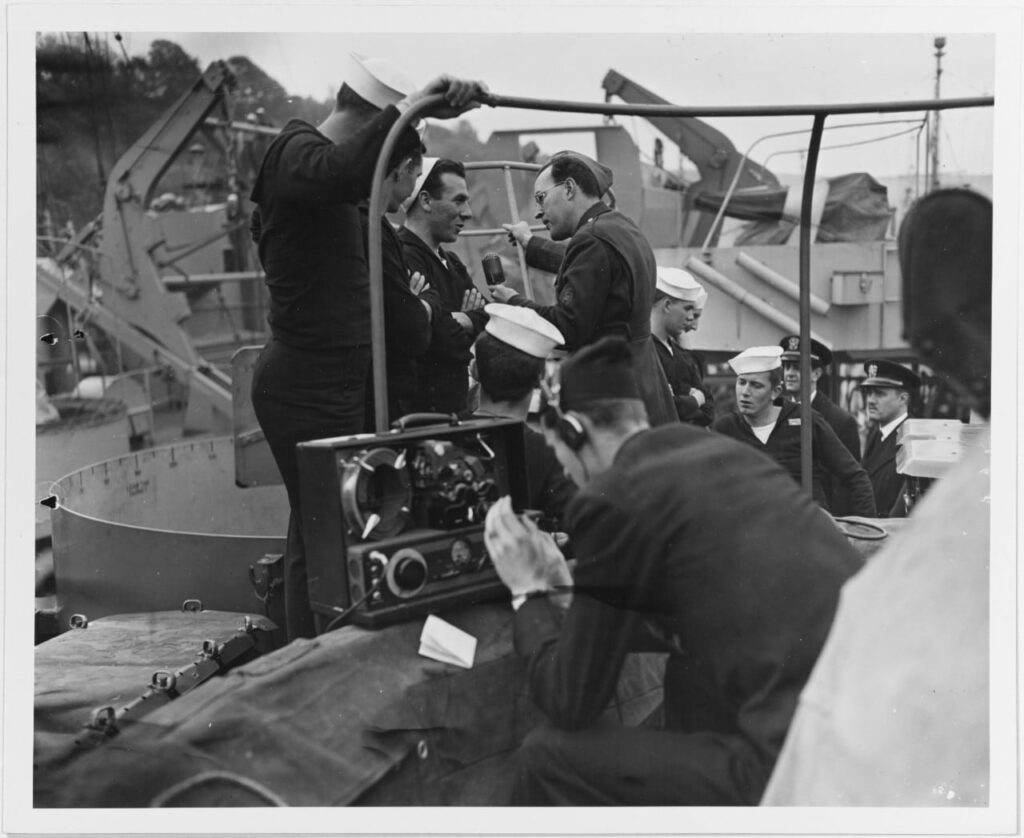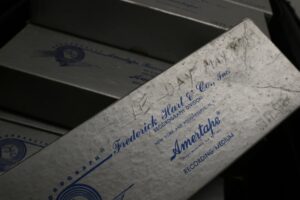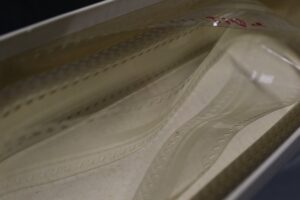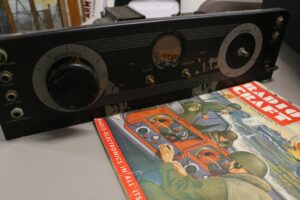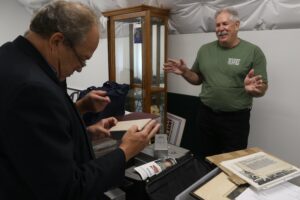It’s evening on D-Day. Blue network radio correspondent George Hicks takes his position on the deck of the USS Ancon just off the French coast. As Nazi aircraft fire on the ship, Hicks speaks into a new type of recording machine – the Recordgraph – capturing, for the first time, the sounds of battle during World War II on an innovative medium, a cellulose acetate film called Amertape. For nearly 13 and a half minutes, Hicks narrates the German air raid and destruction of an attacking plane.
The Stern Collection
Fifty years after D-Day, in 1994, Bruce Campbell bought an old cabin on Long Island. As Campbell began cleaning out the basement, he came across boxes containing what looked like movie film. He’d discovered 16 Amertapes and various parts of a Recordgraph machine.
Here we go again; another plane’s come over, right over our port side. Tracers are making an arc right over our bow now. … Looks like we’re going to have a night tonight. Give it to them, boys!
Played on stations across America starting on June 7, within mere hours of the actual event, the American press hailed Hicks’ D-Day broadcast as the greatest recording of the war. Hicks is credited with pioneering live news broadcasting as we know it today. Music stores sold a record of the report. The Library of Congress added Hicks’ audio to the National Recording Registry in 2012. Yet, for decades, the original Amertapes of Hicks’ broadcast were thought lost.
Fifty years after D-Day, in 1994, Bruce Campbell bought an old cabin on Long Island. The home’s basement was filled with dusty belongings of the previous inhabitant, the late Albert Stern, vice president of Frederick Hart & Co., the New York manufacturer of the Recordgraph. As Campbell began cleaning out the basement, he came across boxes containing what looked like movie film. He’d discovered 16 Amertapes and various parts of a Recordgraph machine.
With no idea what was on the Amertapes and no way to play them, Campbell eventually connected with Adrian Tuddenham, an expert in antique audio machinery living in England. Campbell flew there with the Amertapes in his carry-on. With the help of a device Tuddenham created to play and preserve the Nuremberg trial recordings, Campbell was finally able to hear Hicks’ D-Day dispatch and the reports of other famous World War II journalists, including Edward R. Murrow, all there on the 16 Amertapes.
Recognizing the historical significance of this rare material, in 2019 Campbell donated the entirety of the Stern collection, including what may well be the original recording made in the English Channel on D-Day, to the National D-Day Memorial Foundation.

